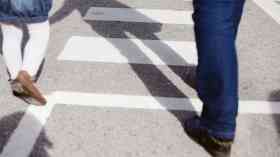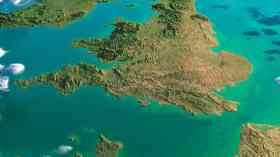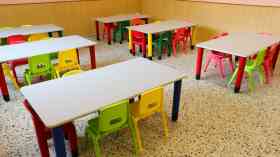Places People Play
 Getting more people playing and enjoying sport is the cornerstone of Sport England’s work. In January, we announced our new five-year youth and community sport strategy that will deliver on Lord Coe’s 2012 Games bid promise to inspire a generation to get involved in sport.
Getting more people playing and enjoying sport is the cornerstone of Sport England’s work. In January, we announced our new five-year youth and community sport strategy that will deliver on Lord Coe’s 2012 Games bid promise to inspire a generation to get involved in sport.
The new strategy builds on our existing work, including our legacy programme launched back in November 2010, Places People Play, which is bringing the inspiration and magic of a home Olympic and Paralympic Games into the heart of local communities across England. Places People Play is already delivering results with over 450 sports facilities protected and improved, and 125,000 people inspired to get involved in sport.
Between 2012 and 2017 we will invest over £1 billion of National Lottery and Exchequer funding to create a meaningful and lasting community sport legacy by growing sports participation at the grassroots level.
Participation
While the number of adults playing sport has increase since we won the bid in 2005, sports participation among young people has fallen. Many young people stop playing sport when they leave school. We know young people are faced with a huge range of activities or distractions competing for their time, and we need to make sure that we make the move from the structured environment of school sport into community sport as easy as possible. The quality of the community sports offer has to be high and what young people want.
To achieve this, we need to bring together all the people who know sport and young people to improve the sporting offer that we make available to them: schools, colleges, universities, local county sports partnerships, national governing bodies of sport (NGBs), the Youth Sport Trust, local authorities and the voluntary sector. Our partnerships with these groups play a key role within our strategy and are vital if we are to succeed in building a sporting habit for life.
School and community sports clubs
In order to create as many opportunities as possible for young people to play sport we need build relationships between local clubs and schools. Under our strategy everyone one of the 4,000 secondary schools in England will be offered a community sport club on its site with a direct link to one or more sports.
Once established, coaches and volunteers from local clubs will be responsible for the running of the satellite clubs on school sites. By having a community club within the school and linked to a local sports club, it makes it easier for young people to be involved and then make the move into the local club once they are ready.
Currently, we are working with NGBs on their funding bids for 2013 – 2017. As part of this, they will have to demonstrate the steps they will take to improve the move from school to community clubs. However, we realise that if we are to achieve our aim of a community sport club on every secondary school site, we need all sectors joined up and working together. Each county sports partnership will help create effective local links between schools and sport in the community, building upon the existing health investment in Change4Life Clubs in schools in England.
Colleges and universities
Establishing community sport clubs within schools is important but we must also ensure young people at college and university have more opportunities. Already our Sport Makers progamme – part of Places People Play – has had 17,000 people sign up to make sport happen for their friends, neighbours or colleagues, and we want these same principles applied across further education colleges in England where 150 College Sport Makers will delivering new sporting opportunities for students.
We also want to ensure university students are getting the support they need to take up or continue their sporting passion. Three-quarters of the university student population (aged 16-24) – that’s over 900,000 young people – will get the chance to take up a new sport or continue playing a sport they enjoyed in school or college. Through their bids for 2013 – 17 funding, NGBs will need to show how they will support Universities up and down the country to deliver this commitment.
Opening up school facilities
While improving links between schools and local sport clubs, and giving young people more options to play sport, it’s also important that they – and the rest of community – have the right facilities in which to take part in sport. Some communities are in need of new sporting facilities, or upgrades to existing ones that have fallen into a state of disrepair, others have the pitches and halls they need, but they simply aren’t being used regularly enough. Currently, 76 per cent of sports halls, 73 per cent of artificial grass pitches, 29 per cent of swimming pools and 52% of grass pitches in England are located within the education sector. Many of these facilities are underused – enjoyed by children during term time but left dormant during the holidays or in the evening. If we are to succeed we need to get these facilities opened up so the whole community, not just students, can benefit from them.
Recently we published guidance which will help thousands of schools across the country open up their sporting facilities to the local community. The new guidance aims to help head teachers, governors, school business managers and potential school partners understand the benefits of community use. It advises on the best possible approach, and simplifies the process.
As well as providing much-needed facilities to the sporting community, schools can experience a number of benefits too; including Improved educational attainment and attendance, training and career opportunities for students, increased funding opportunities, promotion within the local community, and; sporting opportunities for staff and pupils
Under our new strategy, we will also make £10 million of National Lottery funding available to help this process of opening up school sport facilities for wider public use and help them maximise the use of all their pools, pitches and sports halls.
Good quality facilities are vital to the success of community sport. We have seen this through the early success of Places People Play, in particular the three Places initiatives – Inspired Facilities, Iconic Facilities and Protecting Playing Fields. Over the course of the programme, we will invest £90 of National Lottery funding to build or improve facilities and local clubs. Already 350 local sports clubs across the country have received grants in the first round of the Inspired Facilities fund to improve and upgrade facilities, while 48 playing fields have so far been created, improved or protected - a number that is set to double following round two. The demand for these funds has shown us we’ve really hit the mark in terms of the legacy that people want for their local community.
Having an impact
Our facilities legacy programmes aren’t the only ones to have hit the mark. Already 33,000 young people have been inspired to do sport in their own time in the first six months of the Sportivate programme.
Aimed at young people who currently aren’t playing sport in their own time, this legacy programme gives 14- to 25-year-olds the chance to find a sport they enjoy. They are given six to eight weeks of coaching and once that’s completed they are helped to find a club or venue where they can keep taking part.
In the South West, a group of young people discovered gig rowing thanks to Nankersey Gig Club which was offering an introduction to the sport as part of Sportivate. The group have since been selected to take part in the 2012 Gig Rowing World Championships on the Isles of Scilly. One of the participants, Oli Maskrey, a 20-year-old Science student from the University of Exeter, said: “I love rowing because it gets me out on the water. We’re all really excited about going to the world championships which is a really great opportunity that I wouldn’t have had without the Sportivate project that got me started!”
Delivered by the network of 49 county sports partnerships, who are working with local providers and sports clubs, Sportivate shows a joined up approach can have a positive impact on those young people we are trying to reach through our strategy.
School Games
Another programme having a positive impact on young people is the School Games. The Games are being delivered through a national partnership made up of the Department for Culture, Media and Sport, Department for Health, Department for Education, Youth Sport Trust, British Paralympic Association and Sport England. This new take on competitive school sport offers competition at the school, district, county and national level. With over 30 sports available, including formats for inclusion of disabled people, the School Games is open to all young people no matter their age, ability or background.
Already nearly 12,000 schools across the country have signed up to compete and the first national final to be held in venues in the Olympic Park on 9 May, the School Games, together with our strategy, will give young people even more opportunity to take part in sport.
Going forward
Changing the sporting behaviour of a generation is not a challenge we underestimate, not least because of the current trend in participation levels and the tough economic climate. However, by working together and establishing strong links between sport and the education sector, we can do something no other Olympic and Paralympic host nation has ever done. The work of our legacy programme coupled with the roll-out of the new Youth and Community Sport strategy over the next five years will ensure young people develop a sporting habit for life.
Further information
To find out more about Sport England’s Youth and Community Strategy or any of the sporting opportunities available, visit our website www.sportengland.org
Latest News
19/12/2025 - 09:54
The Education Committee has expanded its ongoing inquiry into the early years sector to examine how safeguarding can be strengthened in early years settings.
18/12/2025 - 09:25
The UK will be rejoining the Erasmus programme in 2027, following a package of agreements with the EU.
17/12/2025 - 09:31
Ofqual has fined exam board Pearson more than £2 million in total for serious breaches in three separate cases between 2019 and 2023 which collectively affected tens of thousands of students.
16/12/2025 - 09:19
The average funding rates will increase by 4.3% for under 2s, and by almost 5% for 3-and-4-year-olds.
15/12/2025 - 10:30
Local colleges are set to receive £570 million in government funding to expand training facilities in areas such as construction and engineering.







